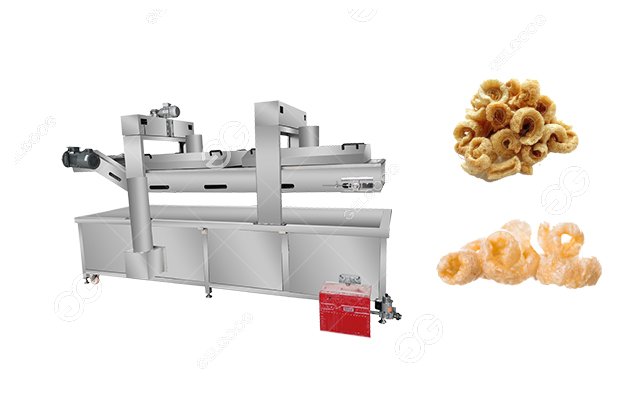How Do You Process Pork Skin?
Pork skin, often overlooked, holds the potential for culinary delights when processed with care. One of the most popular methods of transforming this humble ingredient into a crispy and flavorful treat is deep-frying. While traditionally done by hand, modern advancements have introduced automated frying machines, ensuring consistency and efficiency in the production process.
Understanding pork skin:
Before delving into the process, it's essential to understand pork skin's composition and characteristics. Pork skin, also known as pork rind or crackling, is primarily composed of collagen, fat, and some residual meat. Collagen, when exposed to high heat, undergoes a transformation, rendering the skin crispy and crunchy, a texture highly sought after in many cuisines.
Preparation:
Processing pork skin begins with meticulous preparation. The skin is usually obtained from the underside of the pig, where a layer of fat separates it from the flesh. It's crucial to remove any excess fat and hair from the skin, ensuring a clean and uniform product.
Once cleaned, the skin is often scored or cut into manageable pieces. This not only aids in even cooking but also allows for better seasoning penetration, enhancing the final flavor profile.
Deep-frying process:
Seasoning: Before frying, the pork skin is often seasoned with a blend of spices, salt, and sometimes a hint of sweetness for added depth of flavor. Common seasonings include salt, paprika, garlic powder, onion powder, and cayenne pepper, among others. The choice of seasoning can vary widely based on regional preferences and culinary traditions.
Preheating the oil: In both manual and automated frying processes, the key to achieving crispy pork skin lies in preheating the oil to the correct temperature. Typically, the oil is heated to around 350-375°f (175-190°c), ensuring rapid and even cooking.
Frying: Once the oil reaches the desired temperature, the seasoned pork skin pieces are carefully submerged into the hot oil. It's essential to avoid overcrowding the fryer, as this can lower the oil temperature and result in uneven cooking. The pork skin is fried until it puffs up and turns golden brown, a process that usually takes a few minutes.
Draining and cooling: After frying, the crispy pork skin is removed from the oil and allowed to drain on paper towels or a wire rack. This helps remove excess oil, ensuring a lighter and crunchier texture. Additionally, allowing the pork skin to cool slightly before serving helps intensify its flavor and crunchiness.

Automated frying machines:
In recent years, the demand for consistently high-quality pork skin products has led to the widespread adoption of frying machines in commercial settings. These machines offer precise temperature control, uniform cooking, and increased production efficiency.
Frying machines typically consist of a conveyor belt system that carries the seasoned pork skin through a continuous frying process. The temperature, speed, and duration of frying can be adjusted to achieve the desired texture and color, ensuring uniformity across batches.
Processing pork skin into crispy delights through deep-frying is a culinary art that combines tradition with modern technology. Whether done by hand or with the assistance of automated frying machines, the result is a savory and addictive snack that delights palates around the world.
- Prev:How to Fry Onions in Bulk?
- Next:None
